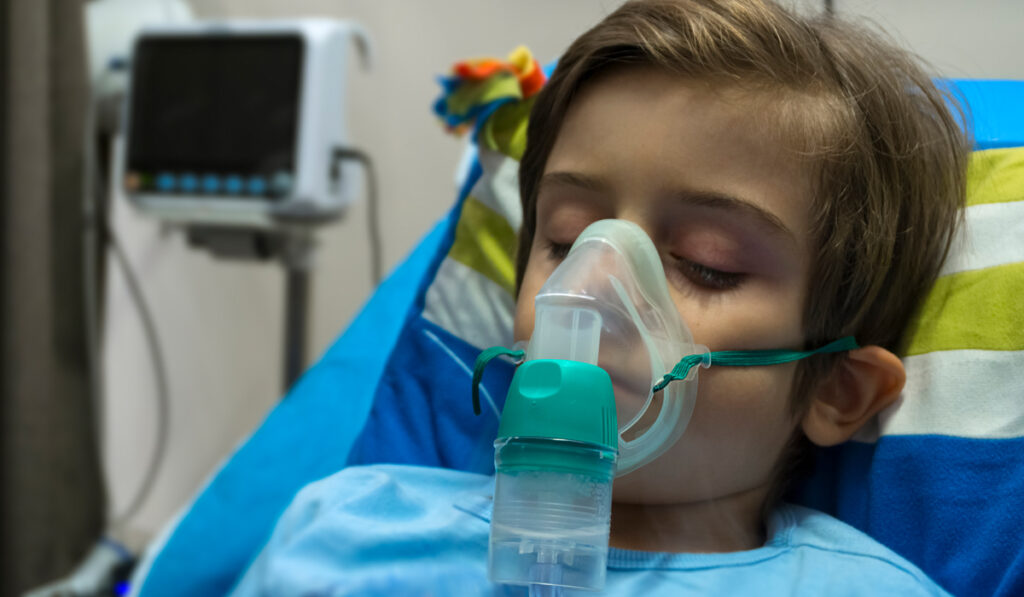A series of studies out of Vanderbilt University Medical Center has zeroed in on who among the pediatric population is at higher risk for severe COVID-19: Black and Hispanic children, teenagers and pediatric patients with certain comorbidities.
The findings provide additional context for parents and providers now that children over 5 are eligible for COVID-19 vaccinations and teens can receive booster shots. The researchers, who assessed both local and national data, also hope this new information can be used to help sway the nearly 30 percent of U.S. adults who remain unvaccinated against SARS-CoV-2 infection to get their shots.
“This is one of the largest multicenter studies of children with COVID-19 in the United States.”
“With the current surge of the omicron variant, children are being infected and hospitalized at record numbers,” said Ritu Banerjee, M.D., senior author and a professor of pediatric infectious diseases at Monroe Carell Jr. Children’s Hospital at Vanderbilt. “Parents, caregivers and medical professionals all need to be aware of the risk factors. If they are caring for children in high-risk groups, they need to get vaccinated and people within the household need to be vaccinated to prevent infection.”
Symptoms Distinct from Adults
Banerjee worked with a team of researchers in Vanderbilt’s Division of Pediatric Infectious Diseases and Department of Biostatistics to conduct a prospective study of the first 1,000 symptomatic children diagnosed with COVID-19 at Vanderbilt at the beginning of the pandemic. Researchers analyzed sociodemographic and clinical factors to build a profile of high-risk pediatric patients, then performed telephone follow-up with families within the first week and again at 30 days post-diagnosis.
Most infected children – 96 percent – remained outpatients with very short-lived symptoms. Nearly half – 45 percent – had complete symptom resolution within five days of diagnosis.
However, among the 41 who were hospitalized, one developed multisystem inflammatory syndrome and another died.
“Pediatric predictors of hospitalization included comorbid conditions, Black race, Hispanic ethnicity, dyspnea and vomiting, and were distinct from those reported among adults,” the authors wrote.
Comorbidity risk factors included obesity, type 2 diabetes, asthma, cardiovascular or pulmonary conditions, chronic neurological conditions and immunocompromised status.
“With the current surge of the omicron variant, children are being infected and hospitalized at record numbers.”
Although this study was conducted early in the pandemic, findings are likely to be similar for currently circulating strains of virus, including omicron, Banerjee added.
With help from artificial intelligence experts at Vanderbilt, the study also produced a predictive algorithm to compute the probability of which pediatric patients who test positive for SARS-CoV-2 will require hospitalization.
Children Are at Risk for Severe Disease
A second study expanded the data to include 45 U.S. children’s hospitals and nearly 20,000 patients.
“This is one of the largest multicenter studies of children with COVID-19 in the United States,” said lead author James Antoon, M.D., an assistant professor of pediatrics at Children’s Hospital.
The retrospective study focused on the subset of pediatric patients hospitalized with COVID-19, which was 20 percent, versus 80 percent discharged from the ED. Among those hospitalized, approximately one in five was admitted to the ICU. Sixteen percent of children evaluated in the ED, and 58 percent of hospitalized patients, had a complication associated with COVID-19. Ten percent of the study population returned to the ED or another department at the hospital within 30 days.
“Almost half of children presenting to the ED for COVID-19 were less than five years of age. The best way to protect these children is to vaccinate those around them,” Antoon said.
Disease was most severe among patients over five years old, all of whom are now vaccine-eligible. The oldest children (ages 12-18) were hospitalized nearly twice as commonly as children ages 0-4, despite representing only 30 percent of the cohort. Private-payer insurance was another factor increasing the odds of hospitalization.
Black and Hispanic patients evaluated in the ED were less likely to be hospitalized compared to white patients in the larger study. But among those hospitalized, children who identify as Black or other-race experienced greater disease severity. The findings of both studies underscore the need for ongoing conversations about health disparities related to COVID-19, according to the researchers.
“These factors help identify vulnerable children who are most likely to require hospitalization or develop severe COVID-19 disease,” Antoon said, emphasizing that pediatric and adult vaccination remains the best way to prevent severe consequences from COVID-19.
What to Do Next?
Despite the emergence of omicron and rising cases of COVID-19 in children, vaccination and social mitigation efforts for COVID-19 are waning in many areas. High-risk children are particularly vulnerable during this phase, Antoon said.
“These children need to be protected by vaccinating as many people as possible, while also using practical strategies to limit spread, such as masking, distancing and ventilation.”
Studies to track COVID-19 in children are continuing. In the meantime, the researchers hope their data will be used to update public health and drug development strategies.
“We were able to identify children at highest risk for severe COVID-19, which will allow us to target those children for preventive therapies like vaccinations and monoclonal antibodies or antivirals that may be developed in the future,” Banerjee said.
Already, Vanderbilt has launched a massive COVID-19 vaccination campaign for children ages 5 to 11, and for pregnant women, including booster doses for those 12 and older, in accordance with CDC guidelines.
Research is also underway at Vanderbilt to improve diagnosis of COVID-19 complications in children and identify biological mechanisms that contribute to severe disease in the context of pediatric comorbidities.







